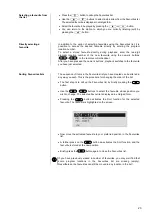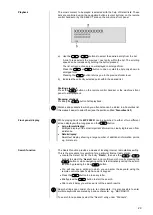
32
Operating the UPnP / DLNA source
(Streaming Client)
General information on the
streaming client
The
MP 2500 R
features what is known as a ‘streaming client’. This facility
makes it possible to play music files stored on PCs or servers (NAS) within the
network.
The media content formats which the
MP 2500 R
can reproduce are very wide-
ranging, and extend from compressed formats such as MP3, AAC and OGG
Vorbis to high-quality non-compressed data formats such as FLAC, ALAC,
AIFF and WAV, which are thoroughly audiophile in nature. A full listing of all
possible data and playlist formats is included in the Specification, which you will
find in the Appendix to these instructions.
Since virtually no read or data errors occur when electronic memory media are
accessed, the potential reproduction quality is even higher than that of CD. The
quality level may even exceed that of SACD and DVD-Audio.
Selecting the UPnP / DLNA
source
Briefly tap the
button on the front panel of the
MP 2500 R
or the
button on the
SRC1
remote control handset, repeatedly if necessary,
until the source “
UPnP / DLNA
”
is displayed on the screen.
Playback
The music content to be played is selected with the help of Select lists. These
lists are controlled using the navigation buttons (cursor buttons) on the remote
control handset or the machine’s front panel.
a) Use the
/
buttons to select the desired entry (Server /
Folder / Track) from the list.
A brief press selects the previous / next entry within the list. The scrolling
speed can be increased by holding the button pressed.
The list entry you choose is now displayed in enlarged form.
Press the
or
button to open or start the list entry shown in
enlarged form.
Pressing the
button returns you to the previous folder level.
b) Indicates the currently selected point within the opened list.
The exact form of the displayed list and the preparation of the content also
depend to a large extent on the capabilities of the server, i.e. the full facilities of
the
MP 2500 R
cannot be exploited with all servers or media. You may
therefore find that in many cases not all the functions described in these
instructions can be used.






























